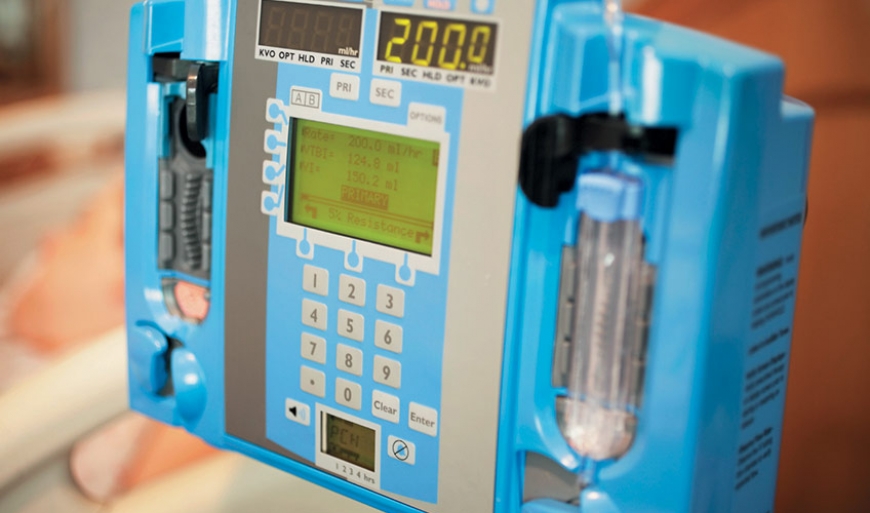Sealing in Medical Device Savings
An infusion pump manufacturer saves $175,000 with a material switch

挑战
A lot can change in 15 years. But for a global medical device manufacturer time had stood still for a key component in one of its products.
When the company decided to redesign this critical valve insert for one of its medical pumps, the project was beset with problems. For starters, the insert was made from thermoset silicone rubber – a tried-and-true material that requires a slow-and-costly manufacturing process. What’s more, the part’s outdated design made it inefficient to produce and resulted in a labor-intensive assembly of the finished product.
The manufacturer needed an overhaul for the part – from a completely new base material to a more efficient manufacturing process.
解决方案
To get help in finding the best alternative material that could be produced faster and more efficiently, the manufacturer turned to Avient. Starting with specific performance requirements, Avient’s formulation experts set to work developing several thermoplastic elastomer (TPE) grades that could deliver better productivity and enhanced key properties than the silicone rubber part.
The resulting custom-formulated grades of GLS™ Dynalloy™ OBC and Versaflex™ TPE allowed the manufacturer to switch to a two-shot molding process that eliminated the time-consuming and costly assembly operations needed for the old part. The new materials also offered quick set-up and faster cycle times, resulting in higher productivity.
Extensive compatibility testing confirmed that the new grades would bond chemically with the engineering thermoplastic rigid substrate required in the device. In addition, the custom grades were formulated to provide a number of other key attributes not found in the silicone rubber part, including:
- Multi-functionality, which enabled replacement of three different hardness grades of the silicone rubber
- Superior tension set
- Improved compression
- Enhanced permeability
Finally, the new TPE grades also boasted lower extractables because they required no crosslinking, unlike thermoset silicones.
影响
The decision to redesign the valve insert paid off in multiple ways for the medical device manufacturer, generating a total annual savings of more than $175,000 a year.
- Reduced assembly costs: Switching to Dynalloy™ OBC and Versaflex™ TPE allowed the introduction of two-shot molding, which eliminated a multi-component assembly process. That saved the company $70,000 a year in direct manufacturing costs.
- Reduced freight costs: The lower specific gravity of TPEs versus thermoset silicone rubber cut the overall part weight by 20 percent. That reduced associated freight costs by $36,000 a year.
- Reduced scrap costs: The easy processability of the two TPE materials resulted in major scrap rate reductions totaling more than $70,000 a year.
As a final benefit, the TPE formulations produced a regrind that resulted in new recycling options that were previously unavailable with the use of thermoset silicone rubber.
